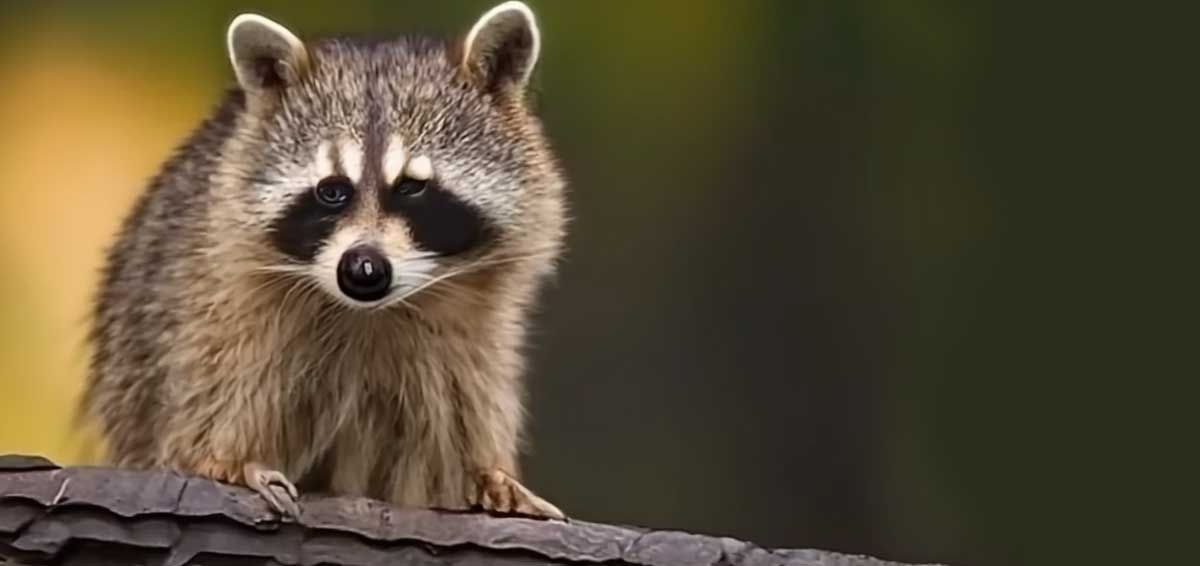Discovering a raccoon on your roof can be a startling and concerning experience.
As a homeowner, it's important to recognize the signs of a potential raccoon infestation and take appropriate action to address the situation.
Let’s explore some common signs of raccoons on your roof, as well as how to prevent it and the best solution for getting rid of them for good.

Common Signs of Raccoon Infestations
Raccoons are highly adaptable creatures that can make their homes in a variety of environments, including urban and suburban areas.
They’re primarily known for their dexterity and intelligence, which makes them adept at finding ways into attics and onto rooftops.
Here are some signs that you might have a raccoon infestation:
1. Nocturnal Noises and Scratching Sounds
Raccoons are primarily nocturnal animals, which means you’re probably hearing raccoons on the roof at night. One of the first signs of a raccoon on your roof is the sound of scratching, thumping, or chattering coming from above.
These noises can indicate that a raccoon is trying to find a way into your attic or has already established a nest there.
Pay attention to these sounds during the evening or early morning hours when raccoons are most active.
2. Damage to Roof Shingles and Vents
Another telltale sign of a raccoon infestation is visible damage to your roof shingles and vents.
Raccoons have strong paws and sharp claws that allow them to tear apart roofing materials in their quest to find shelter. Look for torn shingles, damaged vents, or holes in your roof that could indicate a raccoon's attempt to gain access to your attic.
It's important to conduct regular roof inspections to catch these signs of damage early. By identifying and repairing any damage promptly, you can prevent raccoons from making your attic their new home.
3. Droppings and Nesting Materials Near Roof Area
Another clear indicator of a raccoon infestation is the presence of droppings or latrines on your roof or in your gutters.
Raccoon droppings can pose significant health risks, as they may contain harmful parasites or diseases. If you notice any droppings or latrines in these areas, it's a strong sign that raccoons are frequenting your roof.
You’ll also want to keep an eye out for nesting materials like leaves, twigs, or insulation near your roof area. Raccoons are known to create nests using these materials, and their presence on your roof or in your attic can be a clear indication of a raccoon taking up residence.
When dealing with raccoon droppings or nesting materials, prioritize your safety. Always wear protective gloves and a mask to avoid direct contact with potentially hazardous materials.
Better yet, contact a professional animal control service for safe and effective removal.
How Do I Keep Raccoons Away From My Roof At Night?
1. Secure Garbage Cans and Remove Food Sources - Highly Effective
One of the primary reasons raccoons are attracted to residential areas is the availability of food. To reduce the likelihood of raccoon visits, ensure that your garbage cans are securely closed with tight-fitting lids.
If necessary, use bungee cords to keep the lids in place, preventing raccoons from prying them open. You’ll also want to remove other potential food sources, like pet food left outside overnight or fallen fruits from trees. Raccoons have a keen sense of smell and will be drawn to any easily accessible food.
When it comes to your garbage cans, opt for metal or heavy-duty plastic garbage cans, as raccoons can easily tear through regular plastic bags and flimsy containers.
2. Trim Tree Branches Near the Roof - Highly Effective
Raccoons are excellent climbers, and overhanging tree branches can provide them with a convenient pathway onto your roof. To minimize this risk, regularly trim your tree branches that extend close to the roof. This helps eliminate raccoons on the roof.
As a general guideline, aim to keep branches at least 6-8 feet away from the roofline. This distance makes it more challenging for raccoons to leap onto the roof from nearby trees.
For safe and proper tree trimming, consider consulting with a professional arborist. They can assess the health of your trees and ensure that trimming is done correctly, without causing harm to the trees or your property.
3. Install Motion-Activated Lights or Sprinklers - Minimally Effective
Install motion-activated lights around your property, especially near the roof area and potential entry points. The sudden illumination can startle raccoons and discourage them from lingering.
Consider also adding motion-activated sprinklers as an extra layer of protection. The unexpected spray of water can be unpleasant for raccoons, causing them to retreat.
Once you have both, position the lights and sprinklers strategically to cover common entry points and the perimeter of your roof. This will create a more challenging environment for raccoons to navigate and reduce their chances of finding a way onto your roof.
Is There Raccoon-Resistant Roofing?
While no roofing material is completely raccoon-proof, some options are more resistant to damage and intrusion than others:
- Metal roofing is popular because of its durability and resistance to raccoon claws. Raccoons are less likely to tear through metal compared to other materials.
- Heavy-duty shingles, like those made from fiberglass or reinforced asphalt, can also provide added protection against raccoon damage.
How Do I Get Rid of Raccoons on My Roof
If you've confirmed that raccoons have taken up residence on your roof or in your attic, it's time to take action to safely and humanely remove them.
Use Humane Traps and Relocation - Highly effective
Live traps can be a humane way to capture and relocate raccoons. Before anything, familiarize yourself with local wildlife laws to ensure that your trapping and relocation efforts comply. In Ontario, permits are required.
Only licensed trappers can permanently remove captured wildlife.
Position traps near known entry points or along paths frequently used by raccoons. The roofline, near the eaves, or close to trees with overhanging branches are common spots.
Bait the traps with appealing foods like marshmallows, canned tuna, or cat food. Raccoons have a keen sense of smell and are attracted to these scents.
Check the traps frequently— at least once a day (preferably in the morning) — to ensure that any captured raccoons are not left in the trap for too long.
One-way doors will keep racoons out, but they will create a new entry point to get back in, especially if they have babies nesting in the attic, therefore damaging or even destroying your roof.
However, trapping a raccoon on a roof at night could be tricky, especially for someone who's never done it before. That’s why it is important to contact a wildlife removal service— not only to safely relocate the raccoon, but to make sure you’re not risking your safety!
Seal Entry Points and Repair Damage - Highly effective
Inspect your roof, vents, and eaves for any holes or gaps that could serve as entry points for raccoons. Use sturdy materials like galvanized welded wire or metal flashing to seal these areas according to roofing rules and common roofing practices.
If you have any roof damage, address it promptly. Torn shingles, damaged vents, or holes should be repaired to prevent raccoons and other wildlife from gaining access.
Conduct a thorough inspection of your attic and roof area regularly to identify and rectify any vulnerable areas, especially roof connections, eavestroughs, overhangs, and dormers.
Hawkeye: Qualified Animal Control Specialists for Raccoons on the Roof
If you're uncertain about handling the situation yourself or if the raccoon infestation is severe, get help from a professional animal control specialist or wildlife removal service.
We have all the necessary tools, knowledge, and experience to safely and effectively remove raccoons and other animals from your property.
If you’re wondering “How do I get rid of the raccoon on my roof?” contact Hawkeye today so those raccoons can get out (and stay out!).














